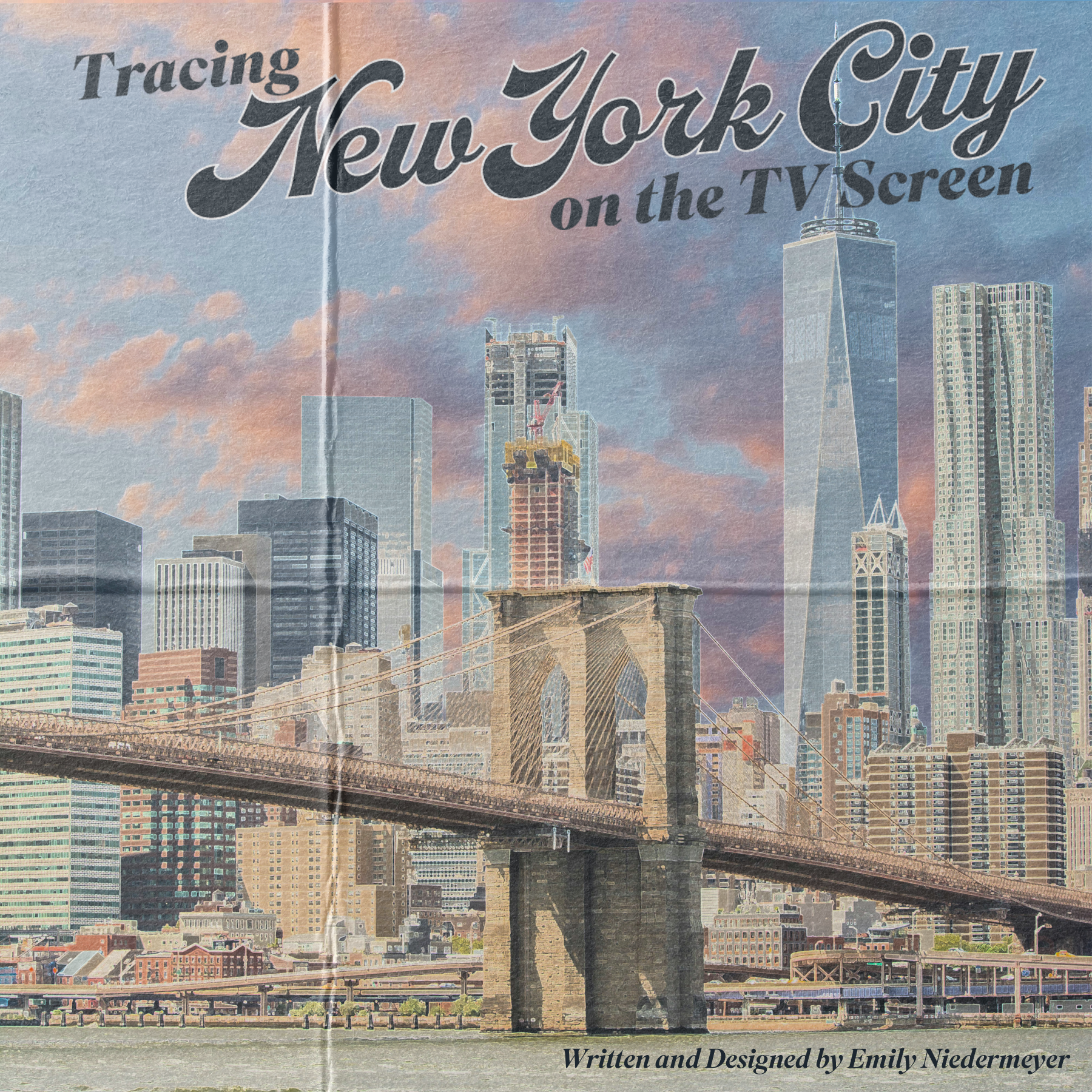
New York City is perhaps the most iconic city in the world. A quick walk through any of the five boroughs will immerse one into a singular and distinctive experience. It exemplifies the definition of metropolis as a chief city of the region and an economic, political and cultural hub. It attracts visionaries across the world while retaining its born and bred residents who represent the New Yorker attitude and maintain much of the city’s nostalgic tone. All of the residents, however, regardless of their birthplace, are looking to live and breathe the American Dream in its largest city.
The silhouettes of The Big Apple’s most symbolic structures — the Empire State Building, the Chrysler Building, The Plaza, One World Trade Center — are a routine view for most New Yorkers and the populations that surround the city. However, for those across the country and across the world, the quintessential New York City skyline has been popularized by its portrayal in fictional media, from the 1950s Golden Age to today.
The City’s prominence makes it the perfect setting for Hollywood’s most trendy television shows and their most unique and animated main characters, whether they be struggling journalists, idealistic lawyers, romantic advertising agents or sharp businessmen. The presence of New Yorkers in the media has romanticized the city in the living rooms of millions of Americans over the past couple of decades.
In the 1950s, television replaced radio as the primary way Americans experienced home entertainment. By 1960, 45.7 million households had a set in their living room. The medium brought shows like “I Love Lucy” (1951 – 1957) into the spotlight, setting the stage for the modern sitcom while also normalizing a classic New York City household. At the time, the show was black and white, portraying the city in crisp shades of gray. Other shows of the era include “The Dick Van Dyke Show” and “Dr. Kildare,” which both ran from 1961 to 1966. The latter was one of the first medical dramas to grace the screens of Americans, featuring the fictional Blair General Hospital in New York City.
The late 1900s brought a slew of sitcoms, from “Seinfeld” (1989-1998) to “Friends” (1994-2004), which have had a broad influence, from fashion and social habits to the current comedy landscape. Between Elaine, Jerry and Jason parading through the streets to Joey, Rachel, Chandler, Phoebe, Monica and Ross getting comfy on the iconic Central Perk couches, New York became a familiar setting to many audiences. This era in particular glamorizes the characters’ unexplainably massive apartments, failing to find a reasonable balance between income level and their monthly rent. The classic New York sitcom has found itself at a cultural cornerstone for multiple generations — and their current presence on streaming makes the genre readily accessible for those looking to find their new comfort show.
New York City was romanticized even more in the early 2000s through shows like “Sex and the City” where the city is literally described as the fifth star of the show, guiding the everyday dalliances of the four feature characters. The setting is characterized by beautiful brownstones, cabs that zoom past every block and the click of Carrie Bradshaw’s designer heels on the uneven sidewalk. Seriously, who can afford 100+ pairs of shoes?!
The trend sticks with “Gossip Girl” (2007 – 2012), which continues to depict New York City as a hub for the rich elite and subsequently, their children. Blair Waldorf and Serena van der Woodsen exude power and affluence, and the frequented settings, such as the steps of the Met and the elegant, elite schools, are fitting for their characters and the upper class troubles they encounter. The classic protagonist archetype begins to shine in the 2010s through shows like “The Mindy Project” (2012-2017) and “Girls” (2012-2017), with the fixation on the quirky and loveable yet flawed main characters.
New York also finds itself as the perfect action setting for a number of Marvel’s 2015-era television shows like “Daredevil” and “Jessica Jones.” Its diverse setting opportunities make for exciting action sequences and interesting visuals along the backdrop of the city.
This leads us into the iconic shows on screen today, from “Succession” (2018-2023) to “Only Murderers in the Building” (2021-Present). While diversity in genre has always existed, it seems like our current television line-ups offer the most variety. Television today feels inspired by TV shows that have come and gone, from the pioneering ’50s, the classic ’90s sitcom, the glamorous 2000s gurus and the action packed 2010s. New York City is multifaceted and vast – it only feels natural that the on screen portrayals reflect that.
As the City has transformed from a post-war manufacturing era with millions of immigrants reshaping the demographics and culture of each and every block, its portrayal in the media has also transformed. But do the fictional depictions accurately portray reality? In February 2025, New York City’s poverty rate was 25%, almost double the national poverty rate. Rising costs for basic necessities like housing, food and healthcare are causing more residents to drop beneath the poverty line. While many of these shows do reference the high cost of living in the City, do they truly represent the struggle to live and thrive in The Big Apple? Or is New York City destined to exist solely on our screens? Is it a place to travel to and visit rather than endure on the day to day? New York City’s iconic main characters seem to flourish, and despite a couple of difficult story lines, always make it out just fine.
As our media fixations develop over time, the way settings are portrayed will change as well. And in a place as innovative yet nostalgic as New York City, the framework of its portrayal has endless possibilities. It’s a place where dreams can come true and a television setting that inspires its viewers — as they say, somewhere between living and dreaming, there’s New York.